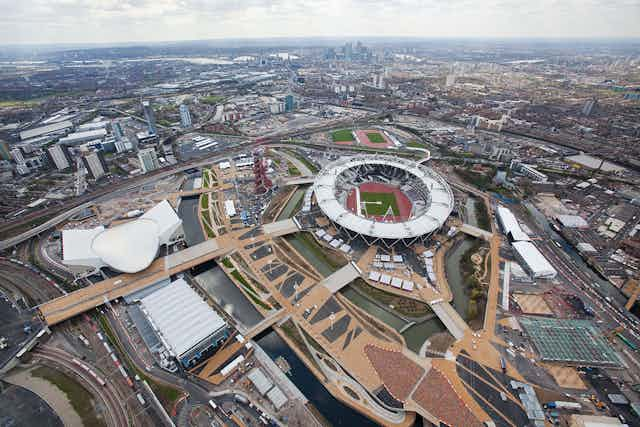The city of Famagusta in Cyprus lies empty, as it has since the 1974 invasion that divided the island into north and south. The city its former inhabitants left behind is now a ghost town, streets overgrown with bushes, windowless buildings like concrete skulls, roofless brick homes left open to the elements.
Reviving Famagusta is a key part of the jigsaw puzzle that comprises the efforts to find a solution to Cyprus’ social and ethnic tensions, a puzzle that this year’s US-brokered talks between Turkish and Cyprus authorities hope to solve.
While the events by which Famagusta came to be deserted, and the length of time it has remained so, are an extreme example, such abandoned brownfield land is all too common. The term brownfield, depending on your definition, refers to sites and broader areas that have been affected by their former land uses, have become derelict or underused, may have contamination issues, usually occupy space in developed urban areas and in any event require intervention to bring them back into beneficial use.
Brownfield redevelopment was among the issues Chancellor George Osborne raised at his annual Mansion House address, focusing on the urgent need to speed up the process of putting unused land to good use, specifically for housing. The Chancellor announced local authorities will be required to use Local Development Orders to pre-approve 90% of their brownfield sites for housing so that building can start sooner. A sum of £5m is being allocated in support of this endeavour.
The chancellor’s announcement means a clear understanding of what exactly a brownfield is has returned to the heart of national politics. For example in the US brownfields are by definition contaminated. In England, the government’s regeneration vehicle – the Homes and Communities Agency – uses the term as a synonym for previously developed land, although it would be more useful to restrict the term to only previously developed land that is also vacant. While the exact definition does not always matter, when funding and government policies are targeted towards sites that meet specific criteria (as in the US) or allocated to government departments in order to meet targets (as was the case under the previous UK government) then definitions are vital.
Mark Twain is credited with advising “buy land – they’re not making it any more”, and by and large he was right; he might have said “reuse brownfield land – they’ll make plenty more of it”. Some cities are shrinking (Detroit, most spectacularly), but most cities are growing, and can do so only by building up, down, or outward.
In any case citizens expect, and authorities should strive for, progress. We expect a variety of services from city land: shelter, education, entertainment, manufacturing, offices, worship, shopping, sport and culture. The structures housing these services may well outlast the service, but the land will outlast them all. We do not consume land in the way that we do food or fuel. But we do have a habit of discarding land and moving on to the next parcel to be used for the next land use.
Recycle that land
We know reusing land is worthwhile. In the UK there’s little choice, being as it is a small, densely populated island with a long history of urban settlement. While our understanding of the long-term behaviour of cities as complex systems is getting better, we face the challenge of predicting the impact of different land uses, and choosing the most sustainable, or at least avoiding the obviously unsustainable. In many cases flexibility beyond the next land use is key. But for housing we are building a legacy that will last a century, perhaps more. Where we build our new homes will influence how far we travel to work, how well we interact with our neighbours, how creative we are likely to be.

Think of brownfield sites as the empty space in the eight pieces on a grid with nine spaces where the challenge is to arrange them so as to form a coherent image. In just the same way as many economists argue full employment is undesirable, so the same goes for eradicating brownfield sites. A derelict site is needed to build the new hospital while the current one continues treating patients. Only once the new facility opens its operating theatre doors, can the old be demolished, in turn to become the site for a new school, perhaps, and so the land use cycle goes on turning. If an area has no immediate hard use for a site, then it can be put to interim uses: a garden, temporary car park, or an arena for outdoor performances and markets.
Meet expectations, not targets
For most people the term brownfield site conjures up images of derelict factories, abandoned train stations, or closed mines. Yet by using the term to mean any previously developed land, past target-driven governments have claimed high rates of brownfield redevelopment. This nonsense extended to counting back gardens and housing estate open space as brownfields, resulting in the absurd accounting of infill development as brownfield reuse. This was eventually dropped by the coalition government, and the targets abandoned altogether. However best use of brownfield, in the colloquial sense, sites, and the challenge of wise stewardship of our cities, remains.
The question we ought to be asking is what sort of cities are we trying to create, and then considering how those empty spaces in the puzzle can help us achieve that, in addition to building high, digging deep, and even occasionally spreading out. We need to minimise our reliance on the car and encourage the design of more walkable cities – ones that the high streets imagined by Mary Portas would benefit from, and which could begin to arrest the slide into obesity and diabetes it seems we are on.
The challenge for the chancellor is to realise the Mansion has many rooms and not all can be counted. It is not only building houses on brownfield sites he should be supporting, but instead great urban places to live, work and play. He and his cabinet colleagues in the Department for Communities and Local Government should be encouraging us to create. He could keep perhaps in his pocket a child’s puzzle, to remind him that space is fixed but what we do with it is not.

